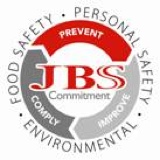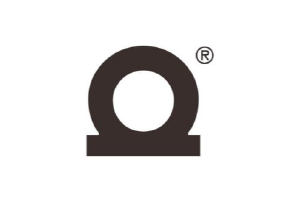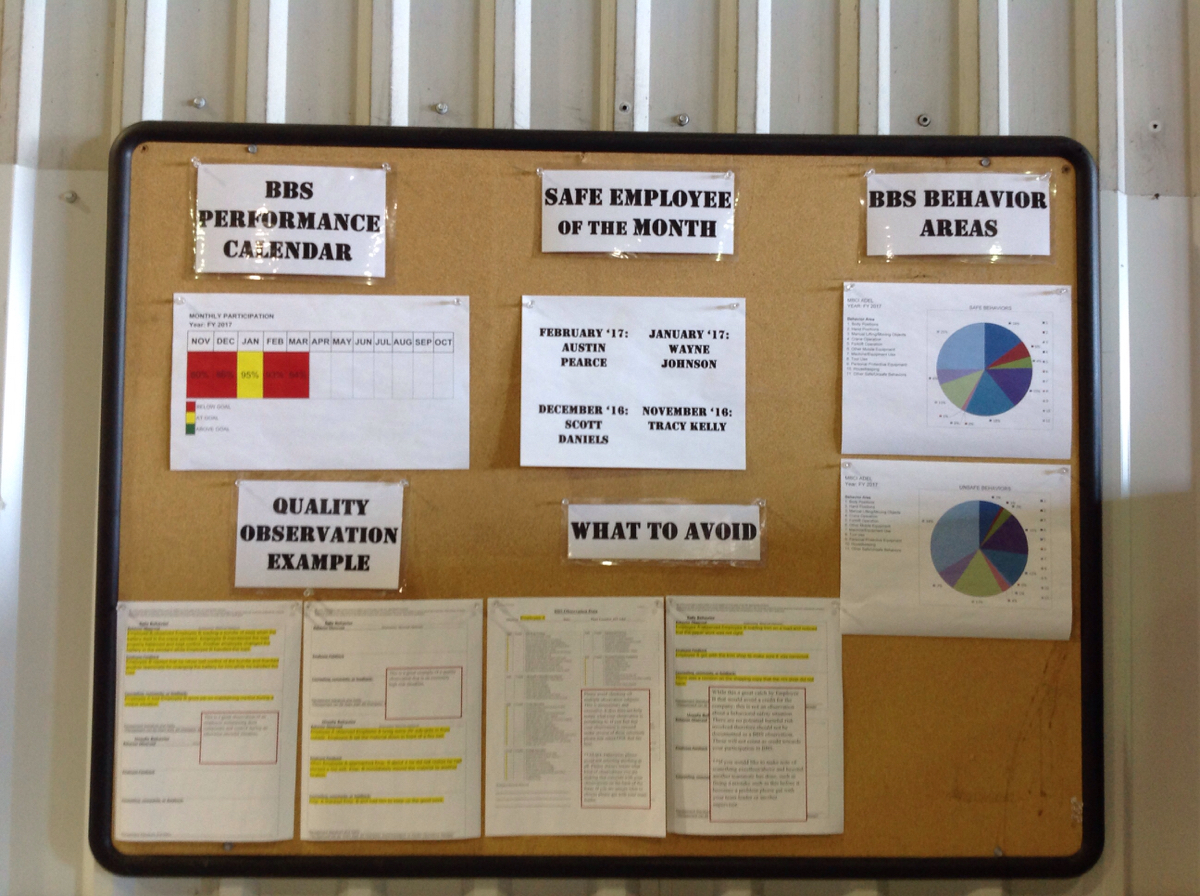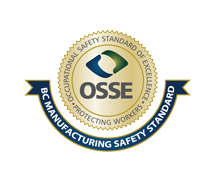Information
-
Audit Title
-
Client / Site
-
Conducted on
-
Prepared by
-
Location
-
Audit Title
-
Prepared By
-
Location
Type of Space
-
Permit Required
-
Non-Permit
-
Non-Permit w/ Conditions
-
Prohibited Entry
-
Date of Initial Assessment
-
Date of Most Recent Review
-
Use of Space
General Information
Space Number
Physical Location of Space
Type of Space
-
Flat Bottom Grain Bin
-
Hopper Bottom Bin
-
Pressure Vessel
-
Liquid Storage Tank
-
Waste Water / Offal Pit
-
Solids Storage Tank
-
Grain Pit
Type of Space
-
Feed Trailer
-
Man Hole
-
Hopper Bottom Rail Car
-
Well
-
Tunnel
-
Finished Feed Bin
-
Other
Type of Space - Entry Points
Entry Point 1 - Type
-
Vertical
-
Horizontal
-
Other
Entry Point 1 - Elevated
-
Yes
-
No
Entry Point 2 - Type
-
Vertical
-
Horizontal
-
Other
Entry Point 2 - Elevated
-
Yes
-
No
Entry Point 3 - Type
-
Vertical
-
Horizontal
-
Other
Entry Point 3 - Elevated
-
Yes
-
No
Basic Assessment
Confined space
-
Is the space large enough and so configured that a Partner can bodily enter and perform work?
-
Does the space have limited or restricted means of entry or exit?
-
Is the space NOT designed for continuous occupancy?
-
Is this a Confined Space?
Permit Required Confined Space
-
Does this space have the potential for containing a hazardous atmosphere?
-
Does the space contain a material which has the potential for engulfing an entrant?
-
Does the space have an internal configuration such that an entrant could be trapped or asphyxiated by inwardly sloping walls or by a floor which slopes downward and tapers to a smaller cross section?
-
Does the space contain any other recognized serious safety or health hazards?
-
Is this a Permit Required Confined Space?
Exposure Assessment
How often is this space entered?
-
Daily
-
Weekly
-
Monthly
-
Annually
-
Emergency Only
Describe typical reason(s) for entry?
How many partners are needed to perform entry tasks?
Nature of Hazard
-
Oxygen Deficiency
-
Hazard Source / Type
-
Hazard Abatement Method
-
Oxygen Enrichment
-
Hazard Source / Type
-
Hazard Abatement Method
-
Flammable Gases or Vapors
-
Hazard Source / Type
-
Hazard Abatement Method
-
Toxic Gases or Vapors
-
Hazard Source / Type
-
Hazard Abatement Method
-
Airborne Combustible Dusts
-
Hazard Source / Type
-
Hazard Abatement Method
-
Chemical Hazards
-
Hazard Source / Type
-
Hazard Abatement Method
-
Mechanical Hazards
-
Hazard Source / Type
-
Hazard Abatement Method
-
Electrical Hazards
-
Hazard Source / Type
-
Hazard Abatement Method
-
Thermal Hazards
-
Hazard Source / Type
-
Hazard Abatement Method
-
Engulfment Hazards
-
Hazard Source / Type
-
Hazard Abatement Method
-
Entrapment Hazards
-
Hazard Source / Type
-
Hazard Abatement Method
-
Slip / Trip Hazards
-
Hazard Source / Type
-
Hazard Abatement Method
-
Extreme Temperature Hazards
-
Hazard Source / Type
-
Hazard Abatement Method
-
Biological Hazards
-
Hazard Source / Type
-
Hazard Abatement Method
-
Toxic Liquids
-
Hazard Source / Type
-
Hazard Abatement Method
-
Potential High Liquid Level
-
Hazard Source / Type
-
Hazard Abatement Method
-
High Noise Level
-
Hazard Source / Type
-
Hazard Abatement Method
-
Oxygen Displacement
-
Hazard Source / Type
-
Hazard Abatement Method
Ventilation Requirements
-
Ventilation Requirements?
-
Volume of Space in Cubic Feet?
-
Natural Ventilation Required?
-
Mechanical Ventilation Required?
Mechanical Ventilation Formulas
-
Initial Purge Time (IPT) = (7.5 x Volume) / Fan CFM
-
You must ventilate the space by a minimum of the Initial Purge Time if you detect a gas level outside the acceptable limits!! Testing may resume after this time is elapsed. If no dangerous levels are detected you may begin the entry, but must continue to ventilate and monitor according to policy!
Personal Protective Equipment
PPE Required for Entry
-
Chemical Gloves
-
Work Gloves
-
Coveralls
-
Hearing Protection
-
Safety Goggles
-
Face Shield
-
Hard Hat
-
Dust Mask
-
Chemical Protective Clothing
-
Steel Toed Boots
-
Other
-
Safety Glasses
-
Tag Line
-
Full Body Harness
-
Life Line
Respiratory Protection Required for Entry
-
SCBA
-
Air Line Respirator
-
Full Face Air Purifying Respirator
-
APR Cartridge / Canister Type
-
Half Face Air Purifying Respirator
-
APR Cartridge / Canister Type
Rescue Equipment
-
Is Rescue Equipment needed?
-
Full Body Harness
-
Life Line
-
Tag Line
-
Radio
-
Ladder
-
Winch
-
Mechanical Advantage System
-
Barrier Guard
-
Class 1, Div 1 Electrical Equipment
-
Spark Proof Tools
-
Tripod
-
Portable Lighting
-
Forced Air Blower
-
Respirators
-
Other
Location of Anchor Points
Communication Procedures
Communication Procedures
-
Handheld Wireless Radio
-
Line Radio
-
Voice from Entry Point
-
Hand Signals
-
Other
Atmospheric Monitor
-
Is Atmospheric Monitoring Required?
-
LEL
-
O2
-
H2S
-
Cl
-
ClO2
-
NH3
-
CO2
-
CO
-
HCOH
Acceptable Entry Conditions
Acceptable Entry Conditions
-
Entry Permit Posted
-
O2: 19.5% - 23.5%
-
LEL: < 10%
-
Toxic Gas Below PEL
-
No Engulfment Hazard
-
Air Monitoring In Place
-
Space / Lines Drained / Flushed
-
Internal Temperatures < 115F
-
Lockout / Tag out In Place
-
Feed Line Blocked
-
Ventilation In Place
-
Rescue Plan In Place
-
Pre-Entry Inspection / Brief Conducted
-
No Hazardous Materials Introduced Into Space
-
See Specific Procedures Section
Photo of Space
Photo of Confined Space
-
Overall View of Confined Space
-
Entry Point 1
-
Entry Point 2
-
Entry Point 3
Entry Procedures
Entry Procedures
-
Prohibited Entry Conditions
-
Pre-Entry Procedures
-
Exceptions
-
Entry Procedures
-
Rescue Procedures
Disclaimer
Disclaimer
-
Keep this confined space hazard assessment on file and readily accessible to authorized and trained "Entry Supervisors" to assist them in completing entry permits for this space. This hazard assessment will require updating should entry conditions change, new hazards have been identified or are introduced, the space itself or process within the space is altered in any way or a documented confined space audit recommends space be re-assessed.
-
No entries are to be permitted unless "acceptable entry conditions" are present. Entry into a Confined Space will be prohibited if an IDLH environment is present or if an oxygen deficient environment exists.













